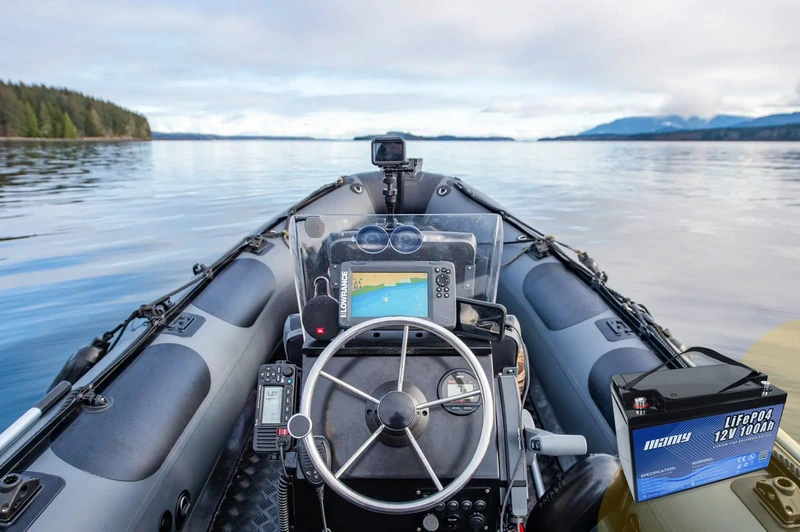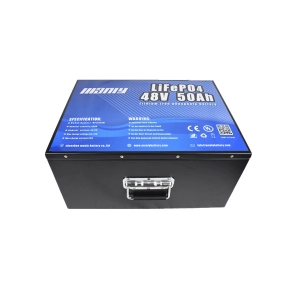Welche Batterie soll Zubehör auf einem Boot mit Strom versorgen?
Inhaltsverzeichnis
- Welche Batterie soll Zubehör auf einem Boot mit Strom versorgen?
- Wo beginnen Sie mit der Batterieauswahl?
- Verschiedene Schiffsbatterietypen verstehen
- Größentabelle für Bootsbatterien
- Wichtige Regeln für die Wartung von Schiffsbatterien
- How to Replace Your Boat's Battery
- Laden einer Schiffsbatterie
- Tipps zur Vermeidung von Batterieproblemen
- Häufige elektrische Probleme auf Booten
- So verhindern Sie größere elektrische Probleme auf Ihrem Boot
- Behebung von elektrischen Ausfällen auf Booten
- Die größten elektrischen Probleme auf Booten
- Abschließende Gedanken zu elektrischen Schiffssystemen
- Erfahren Sie mehr über Batterie

Wo beginnen Sie mit der Batterieauswahl?
When you're deciding on the right boat battery for your accessories, it’s important to start by considering the power needs of your vessel. Different boats have varying electrical demands, depending on the number and type of accessories you have onboard. For instance, if you have a small fishing boat with minimal electronic equipment, your power requirements will be much lower than those of a larger vessel outfitted with multiple electronic systems.A good place to begin is by checking your boat’s owner's manual. This will often provide recommended marine battery types, sizes, and ratings that are suited to your boat's electrical setup. If your current battery has been functioning well, you may consider sticking with the same type or model. However, if you’ve added new equipment or if your existing battery no longer meets your needs, it might be time to explore other options.For example, if you've upgraded your boat with a more sophisticated electronics package, the power draw might be significantly higher than it was before. In such cases, you’ll want to ensure that your new Deep-Cycle-Schiffsbatterieverfügt über eine ausreichende Amperestundenleistung, um die zusätzliche Last zu bewältigen. Dies ist besonders wichtig für Zubehör wie Trolling-Motoren, die über längere Zeiträume kontinuierliche Stromversorgung benötigen. Im Zweifelsfall wenden Sie sich an einen Schifffahrtsexperten, um die beste Lösung für Ihre spezifische Konfiguration zu ermitteln.Verschiedene Schiffsbatterietypen verstehen
There are several types of batteries to choose from, depending on your boat's needs. The three most common are starting batteries, deep cycle batteries, and dual-purpose batteries.- Startbatterien: Diese sind so konzipiert, dass sie einen schnellen Kraftstoß zum Starten des Bootsmotors liefern. Sie liefern für kurze Zeit einen hohen Strom, sind jedoch nicht für die Stromversorgung von Zubehör über einen längeren Zeitraum gedacht. Sobald der Motor läuft, übernimmt die Lichtmaschine und die Starterbatterie wird nicht mehr verwendet.
- Deep-Cycle-Schiffsbatterie: Dieser Batterietyp ist so konstruiert, dass er über lange Zeiträume einen gleichmäßigen Stromfluss gewährleistet. Es ist ideal für die Stromversorgung von Zubehör wie Lichtern, GPS-Systemen und Trolling-Motoren. Im Gegensatz zu Starterbatterien sind Deep-Cycle-Batterien so konzipiert, dass sie wiederholt entladen und wieder aufgeladen werden können, wodurch sie sich perfekt für den Betrieb von Bootszubehör eignen.
- Dual-Purpose-Batterien: Eine Mehrzweckbatterie vereint die Funktionalität von Starter- und Deep-Cycle-Batterien. Dies bedeutet, dass Sie damit Ihren Motor starten und Ihr Zubehör antreiben können. Obwohl sie Platz spart und für kleinere Boote eine gute Wahl sein kann, bietet sie in der Regel nicht das gleiche Leistungsniveau wie spezielle Start- oder Deep-Cycle-Batterien.
Größentabelle für Bootsbatterien
Marine batteries come in various sizes, which are often referred to by group numbers like 24, 27, and 31. The group size simply refers to the physical dimensions of the battery, not its power capacity. It’s crucial to choose a battery that fits securely in your boat’s battery compartment.Larger batteries, such as Group 31, tend to have higher capacities and can store more energy, which means they can power your accessories for longer periods. However, the trade-off is that they are bulkier and heavier. Be sure to select a battery that balances your space limitations with your boat’s power requirements.Wichtige Regeln für die Wartung von Schiffsbatterien
Maintaining your marine battery is just as important as selecting the right one. Here are some essential rules to keep in mind:- Nach jedem Gebrauch aufladen: Laden Sie die Batterie Ihres Bootes nach jeder Fahrt vollständig auf, um zu verhindern, dass sie mit der Zeit an Kapazität verliert. Für Benutzer von Deep-Cycle-Schiffsbatterien ist dies besonders wichtig, da eine zu tiefe Entladung der Batterie ihre Lebensdauer verkürzen kann.
- Vermeiden Sie eine Entladung unter 50 %: Bei überfluteten Blei-Säure-Batterien darf die Ladung niemals unter 50 % absinken, da dies zu irreversiblen Schäden führen kann. Andererseits können Lithium-Schiffsbatterien tiefere Entladungen bewältigen, was sie auf lange Sicht zu einer langlebigeren Option macht.
- Überwachen Sie den Batteriezustand: Use a battery monitor or an app provided by the manufacturer to keep an eye on your battery's state of charge (SOC), temperature, and other critical parameters. This helps prevent unexpected battery failures while you’re out on the water.
- Wählen Sie das richtige Ladegerät: Stellen Sie sicher, dass Sie ein Ladegerät verwenden, das der Chemie und Kapazität Ihres Akkus entspricht. FürMarine-Lithium-Tiefzyklusbatterien, it’s often necessary to upgrade to a charger specifically designed for lithium technology to optimize performance and longevity.




















